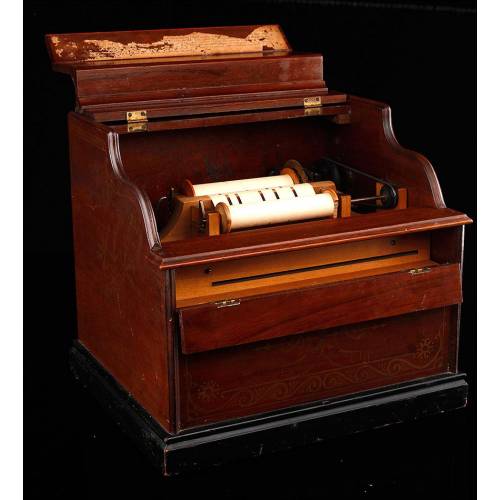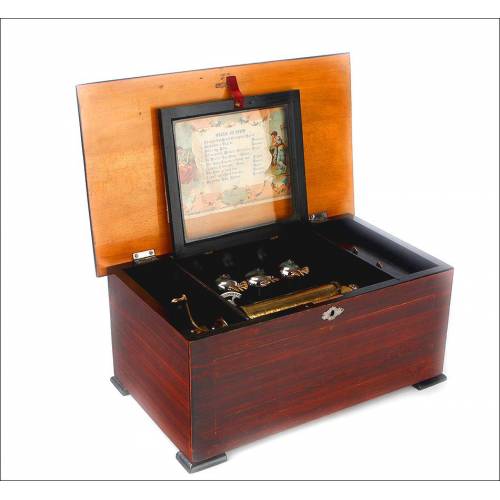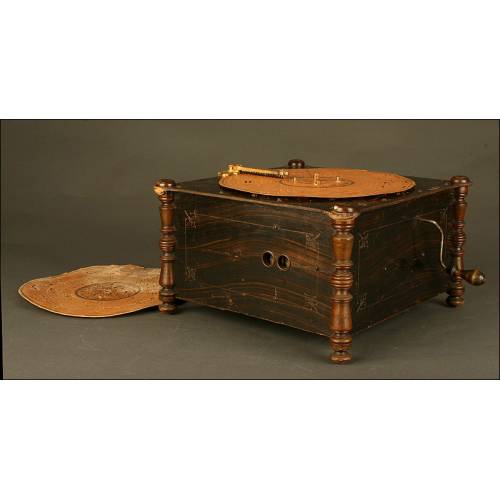C-089
Antique The Gem Organ Piece, 1890s
Charming antique antique barrel organ The Gem. With five rollers of melodies. Sounds wonderful.
Sold!
Nostalgic antique The Gem roller organ in good condition and in working order. The organ was made in Chicago in 1890 and works perfectly. Its inner movement has been fine-tuned in order to guarantee it, so today this charming device can play tunes, among them the British hymn God Save the Queen. In order to do so, it comes with five original rolls, in good condition too. The roller organ provides a neat and loud sound, typical of old-time mechanic musical machines. The box preserves the original golden stencils with lovely schematic floral motives, so popular in the turn of the century. The organs box is made of wood and bears a black-lacquered finish, in good condition and original from the time. The device preserves all its original component parts and pieces. The rear bellow, made of black waxed fabric, is original too; except for some worn parts, it remains in good condition. At the top of the box we can see a fine and complete inscription in stencil letters that reads: The Gem Roller Organ Sears, Roebuck & Co. CHICAGO. Inside the box there is a paper sheet stack to the wood, with directions for the roller organs use and maintenance. This great antique roller organ has witnessed the old times when musical machines were immensely popular. It is both an evocative and decorative piece. Measurements: Width: 14.1 in / 36 cm. Height: 7.4 in / 19 cm.The Gem Roller Organ HistoryIn the late 1880s, the Autophone Company of Ithaca, New York started producing a range of crank-operated roller organs. The first models were operated by pressure and had exposed bellows. Soon after, they began to manufacture vacuum-operated models under commercial names such as The Roller Organ or The American Music Box. But surely, the most popular and affordable model was The Gem Roller Organ. It became so popular than tens of thousands were produced in a single year. Its black case with golden stencil lettering and its open roller frame made it possible to sell at a really low price: $3.25, including three rollers. The huge sales volume reached by this organ could only be contemplated by hiring big distributors such as Sears, Roebuck & Co.; this firm eventually produced a model with its stencil name on it. The Gem was also sold as The New American Music Box and was imitated by different private labels.























































